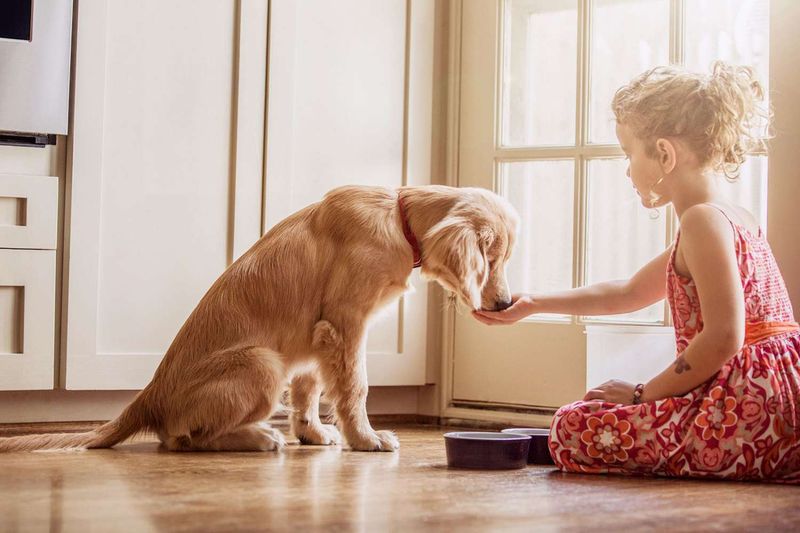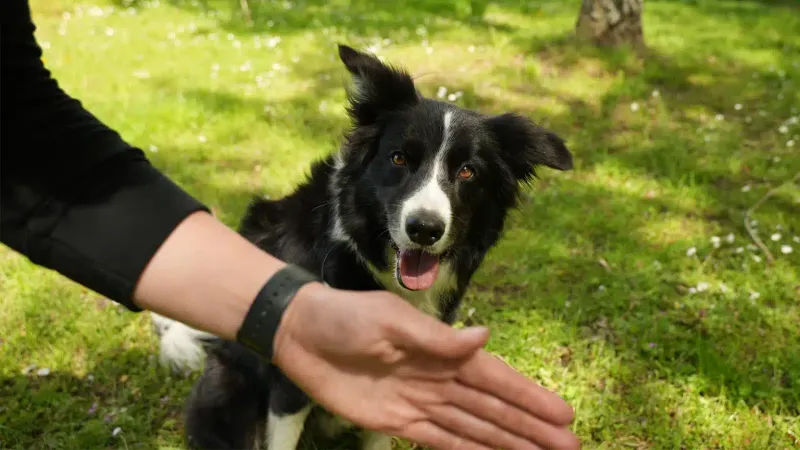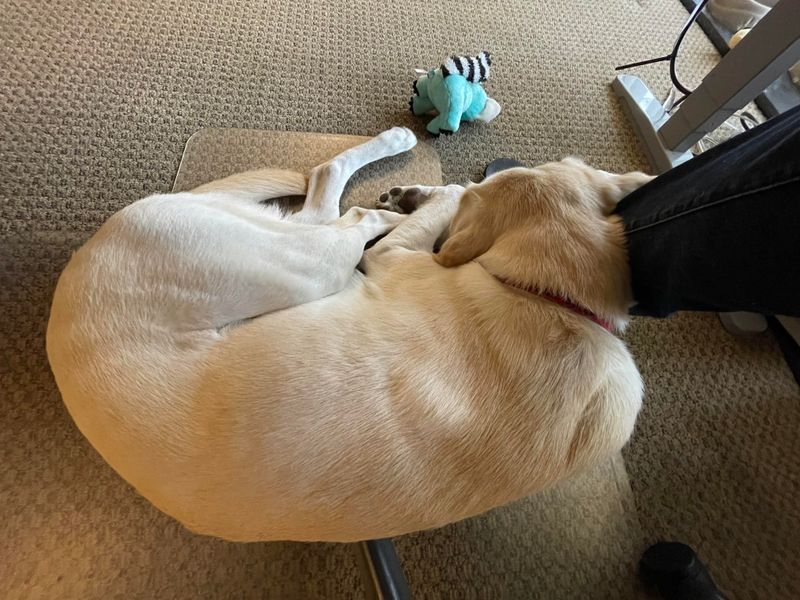Not every wagging tail means happiness. Sometimes, our furry friends hide sadness behind innocent behaviors we easily overlook. That playful bark or constant pacing? It might be a silent cry for help. Dogs are masters of disguise—masking their true feelings with tricks we mistake for joy. But beneath those cute quirks, a storm of emotions could be brewing. If you want to truly understand your dog, it’s time to look beyond the surface. These 15 subtle signs reveal when your loyal companion might be feeling down, even when they act like nothing’s wrong. Don’t miss the hidden messages in their everyday moves.
Loss of Appetite

In the heart of a bustling kitchen, a golden retriever sits beside a full bowl of kibble, its usual enthusiasm for mealtime dampened. The excitement of crunchy bites and filling meals is lost, replaced by a disinterest that speaks volumes.
A sudden loss of appetite in dogs can be more than just a fleeting mood. It might signal emotional distress or sadness lurking beneath the surface. Owners often dismiss this change as picky eating, but it’s crucial to consider the emotional state of the pet.
Addressing underlying issues could restore their appetite and spirit.
Excessive Licking

With each gentle lick, a beagle on a plush carpet seems to be lost in its world. The repetitive motion of licking its paws is more than a grooming ritual; it’s a comfort-seeking behavior.
Dogs often resort to excessive licking as a coping mechanism to deal with stress or sadness. While it might appear harmless, this can lead to sores and skin problems. Understanding this behavior requires empathy and attention.
By addressing the root cause, like a change in environment or routine, owners can help soothe their dog’s troubled heart, guiding them to happier times.
Yawning Frequently

In a sunlit room, a pug lets out a long yawn, its eyes drooping with fatigue. While yawning might seem like a simple sign of tiredness, it can also indicate stress or sadness in dogs.
This behavior can be misleading, as many assume it’s purely due to sleepiness. However, frequent yawning, especially in calm settings, could be a sign of underlying emotional discomfort. Recognizing this can prompt pet owners to investigate further.
Engaging the dog with comforting activities or ensuring a stable environment could ease their hidden woes and bring back their playful nature.
Panting Indoors

Panting is often associated with physical exertion, but when a bulldog pants while resting indoors, it might indicate another story. Amidst the cool tiles of the living room, this behavior can signal stress or anxiety.
Indoors, panting without a clear reason may point to discomfort or sadness. Dogs express their uneasiness through such seemingly benign actions.
Addressing triggers, such as loud noises or unfamiliar guests, can alleviate their stress. Understanding and identifying what causes this behavior allows owners to create a more comforting environment for their furry companions.
Ignoring Commands

A border collie sits in the backyard, its back turned away defiantly as its owner calls out commands. Once eager to please, the dog now seems distant, a subtle act of rebellion that may hint at sadness.
Ignoring commands might not just be a matter of stubbornness. When a normally obedient dog starts displaying such behavior, it can be a cry for attention or an indication of emotional distress.
Spending quality time and reinforcing positive interactions can strengthen the bond and help the dog feel valued, addressing the underlying sadness.
Hiding Away

Beneath the cozy embrace of a couch, a dachshund peers out cautiously, its once vibrant personality overshadowed by a desire to hide. This behavior, rooted in fear or sadness, speaks volumes about the dog’s emotional state.
Hiding might look like a simple preference for solitude, but it often reveals a deeper issue. Dogs may retreat to secluded spaces to cope with stress or emotional turmoil.
Providing a safe and loving environment while reducing stressors can coax them back into the open and renew their confidence, melting away their hidden sadness.
Clinginess

A Labrador retriever follows its owner from room to room, a living shadow clinging to every step. While some might find this endearing, excessive clinginess can signal a lack of confidence or sadness.
This behavior goes beyond mere affection and indicates a feeling of insecurity. Dogs may become overly attached when they sense changes in their environment or routine.
Encouraging independence through training and providing reassurance can help strike a balance, allowing the dog to feel secure while reducing their neediness, thus addressing the sadness hiding in plain sight.
Destructive Chewing

In a room filled with chaos, a husky gnaws relentlessly on the legs of a chair. The destruction is more than mere boredom; it’s a manifestation of distress and sadness.
Destructive chewing often stems from anxiety or emotional unrest. Owners may overlook this as mischievous behavior, yet it’s a plea for understanding and intervention.
Providing mental stimulation and channeling energy through play can redirect this behavior positively. Addressing the underlying issues can transform their destructive tendencies into creative outlets, turning sadness into satisfaction.
Unusual Sleeping Patterns

Curled up under a cozy blanket, a basset hound sleeps at unusual hours, seemingly at odds with its natural rhythm. Such irregular patterns can be more than a quirky habit; they might signal sadness.
Dogs’ sleeping habits are closely tied to their emotional well-being. A change from their usual routine can indicate internal unrest or dissatisfaction.
Monitoring their sleep and ensuring a comfortable environment can help alleviate any distress. By addressing the root causes, owners can help restore balance to the dog’s life, making room for happiness.
Loss of Interest in Play

In a sun-drenched backyard, toys lay neglected as a Dalmatian stares into the distance, its enthusiasm for play faded. Loss of interest in play is a silent cry for help, signaling potential sadness.
Dogs thrive on play, and a sudden disinterest often points to emotional troubles. Owners may mistake this for aging or temporary mood swings.
Reviving a dog’s playful spirit requires patience and engagement, rekindling joy through interactive games and companionship. Understanding the root of their sadness can lead to a joyful resurgence, bringing life back into their days.
Withdrawn Behavior

A German Shepherd sits by the window, its eyes lost in contemplation as it watches the world outside. This withdrawn behavior is not just a phase; it may reflect inner sadness.
Dogs can become emotionally distant, retreating into themselves when faced with stress or dissatisfaction. Owners might miss these subtle signals, assuming the dog is merely resting.
Creating a nurturing environment and actively engaging with the dog can help break this pattern. Addressing their needs and providing emotional support can bring warmth back into their eyes, transforming isolation into connection.
Excessive Barking

In a serene suburban neighborhood, a Chihuahua’s incessant barking breaks the tranquility. This vocal expression seems random, yet it might signal deeper emotional distress.
Dogs communicate through barking, and excessive barking can reveal anxiety or sadness. While some might attribute it to high energy or alertness, it often masks deeper unease.
Identifying triggers and providing mental stimulation can reduce this behavior. Understanding and responding to their emotional cues can transform chaos into calm, restoring peace to both dog and owner.
Snapping or Growling

During a bustling family gathering, a Rottweiler’s low growl sends a clear message of discomfort. Known for its gentle nature, this behavior is out of character and may signal sadness or stress.
Dogs, like humans, have emotional thresholds, and growling can be a way of expressing discontent. Owners might overlook this as aggression, ignoring the underlying emotional turmoil.
Providing a safe space and understanding their limits can prevent such incidents. By addressing the emotional triggers, owners can help their dogs maintain their composure, turning growls into gentle gestures.
Frequent Whining

By the door, a Cocker Spaniel’s soft whine echoes loneliness and longing. This frequent whining isn’t just noise; it’s an expression of sadness yearning for attention.
Dogs whine to communicate, and persistent whining signals unmet needs or emotional distress. Owners might misinterpret this as mere attention-seeking behavior.
Acknowledging their needs and providing companionship can alleviate their sadness. Understanding their perspective can help rebuild the bond, transforming whines into wagging tails, and bringing joy back into their lives.
Avoiding Eye Contact

On a plush cushion, a Shiba Inu averts its gaze, seemingly uninterested in the world around. Avoiding eye contact may appear as shyness but often signals deeper emotional discomfort.
Eye contact is a form of connection, and dogs avoiding it may be expressing sadness or insecurity. Owners might dismiss this as a quirky personality trait.
Building trust through gentle interactions and positive reinforcement can help restore confidence. By recognizing and addressing their unease, owners can bring warmth back into their bond, turning timid eyes into loving gazes.

